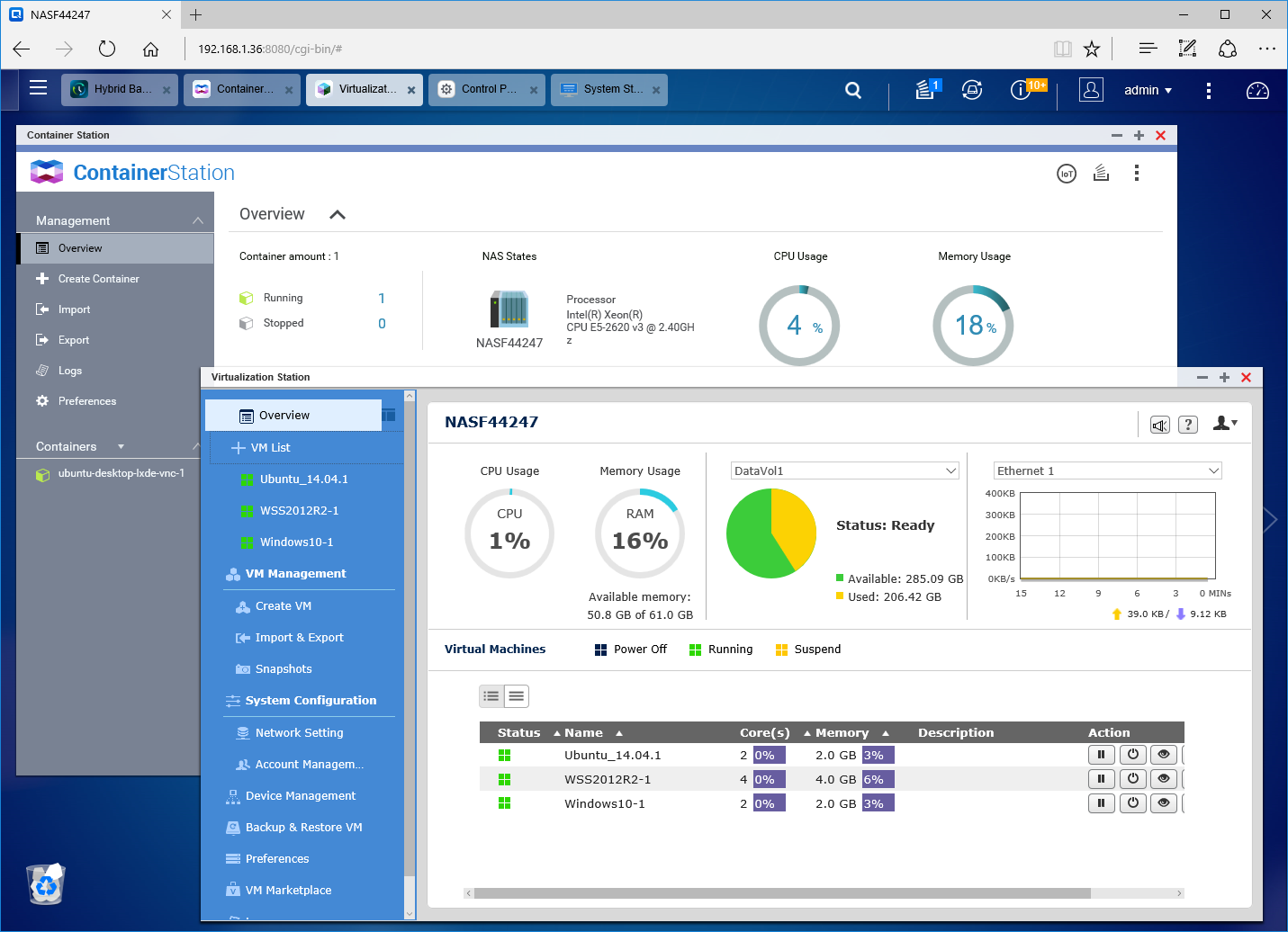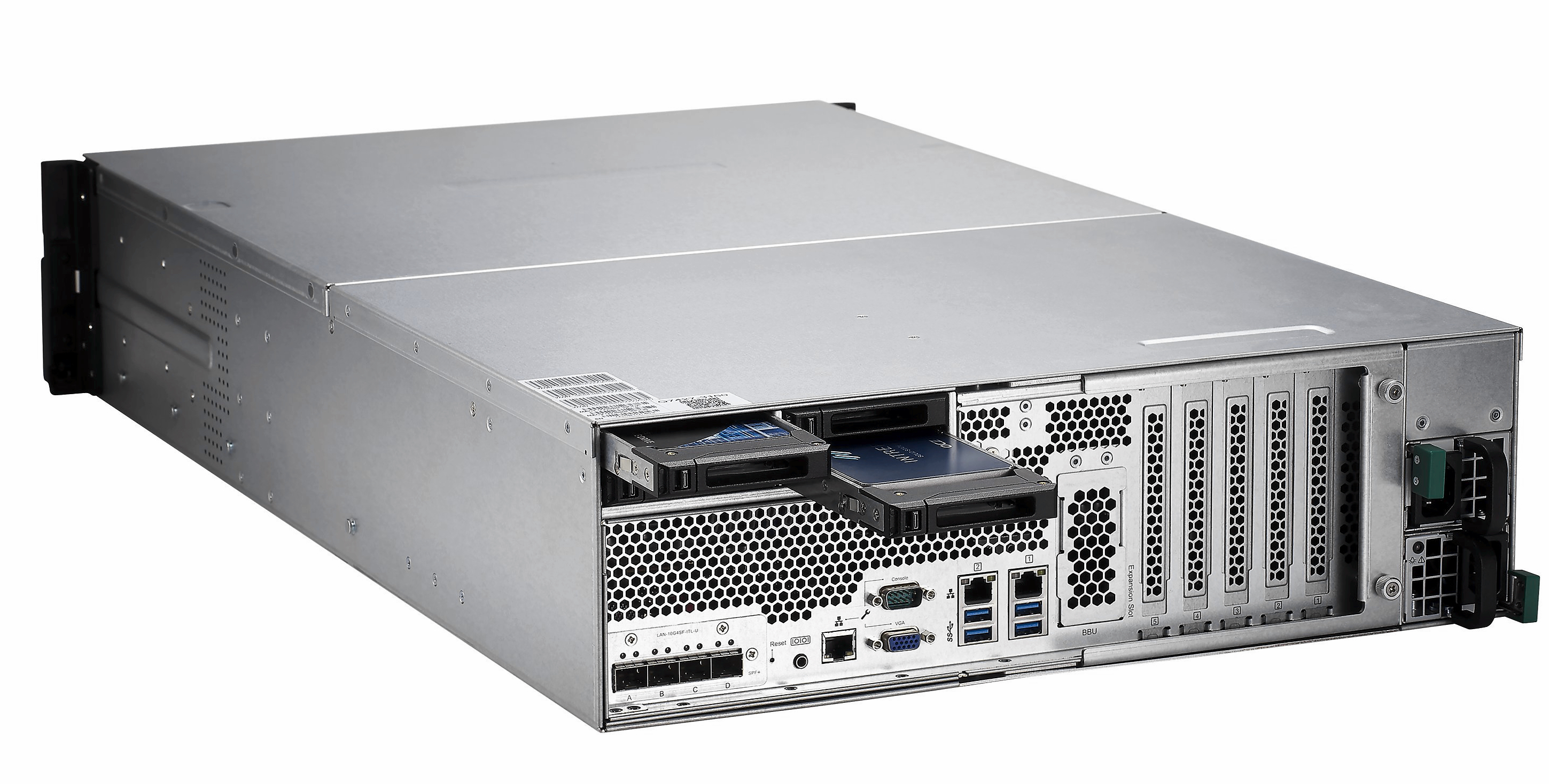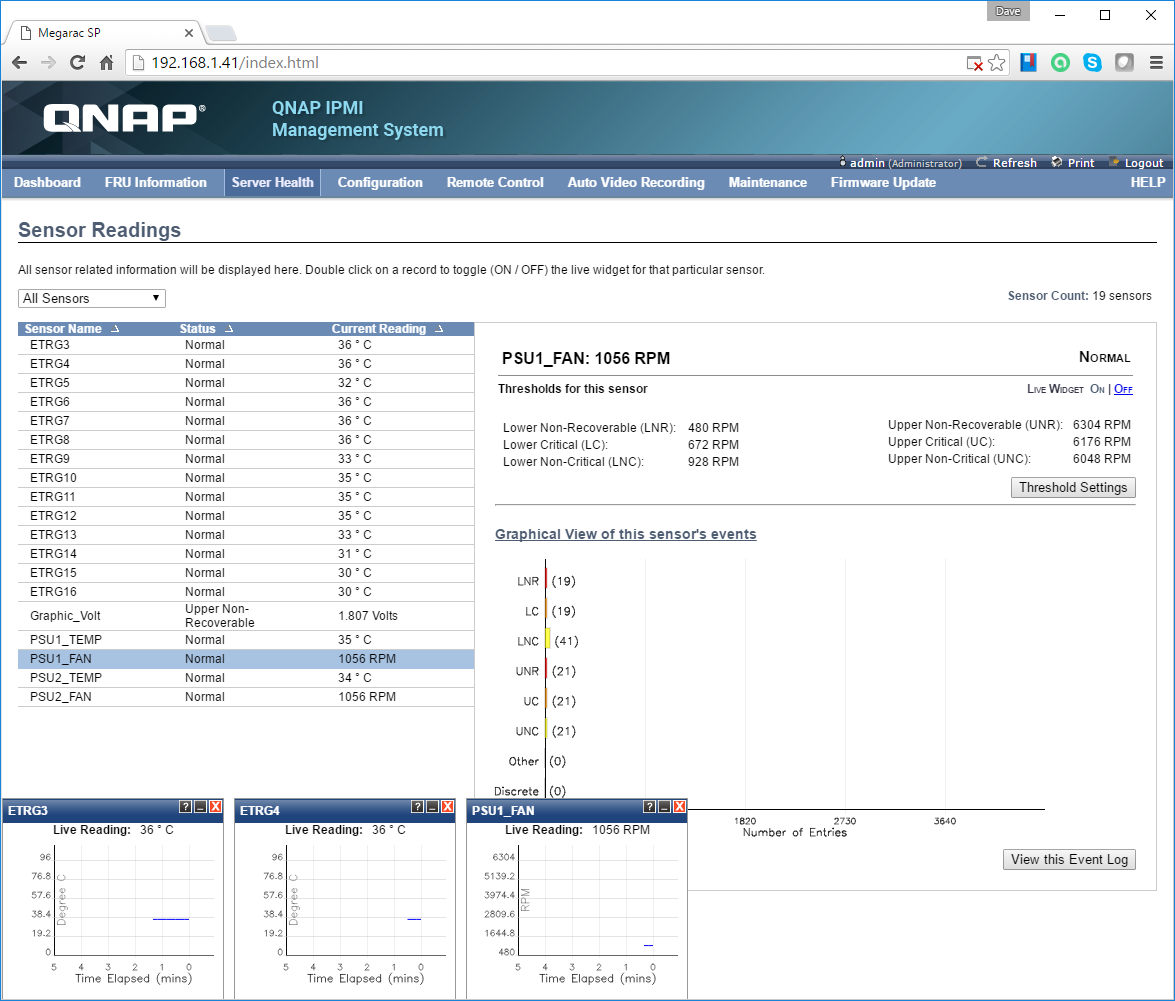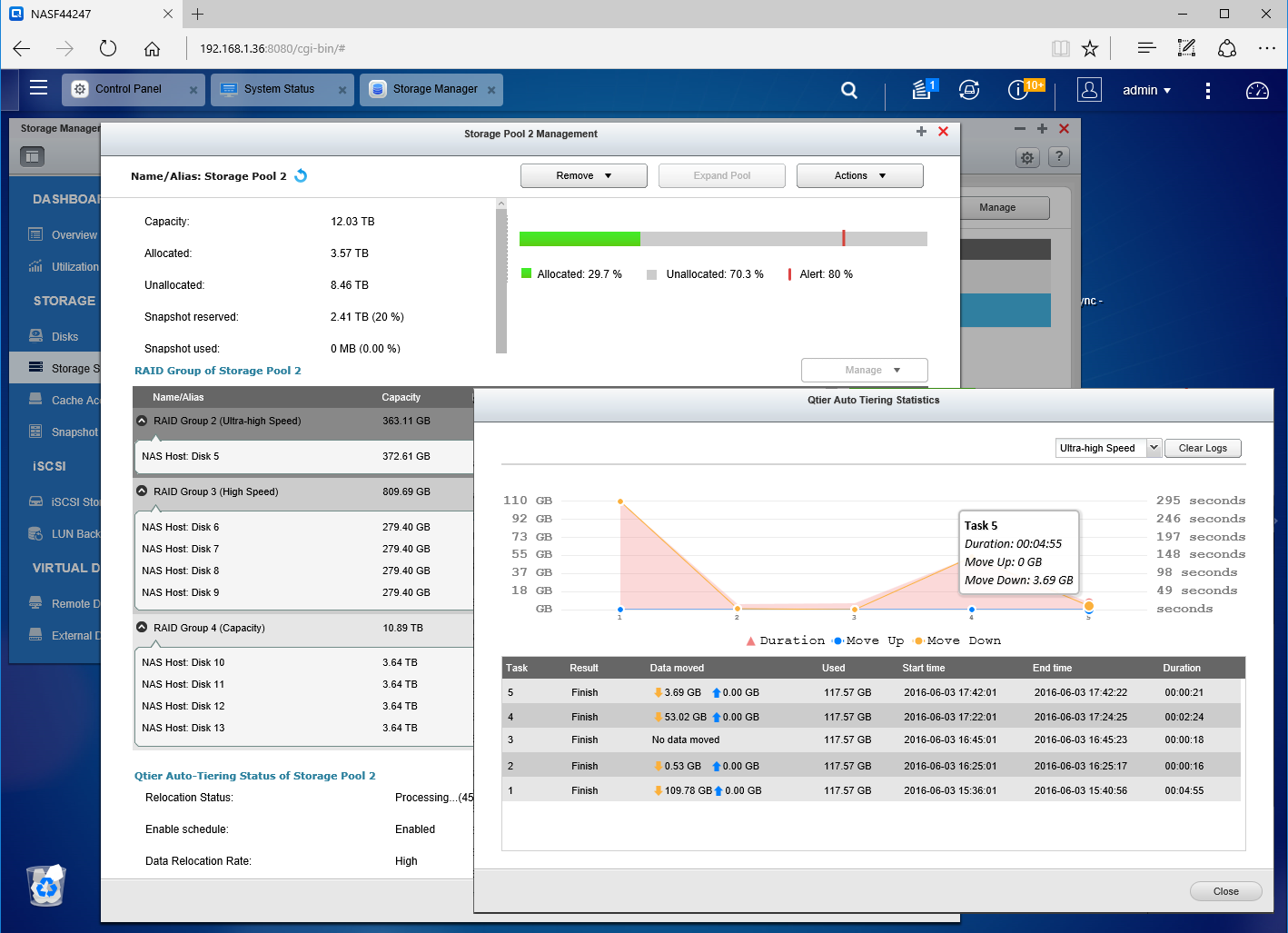Qnap TDS-16489U Double Server review
An all-in-one powerhouse for virtualising your apps and servers


Ideally suited to SMBs, the TDS-16489U is an innovative and affordable virtualisation appliance with plenty of power to cope with heavy demands
-
+
Good value; Xeon E5-2600 v3 CPUs; DDR4 memory; Innovative SAS 3 storage architecture; Free virtualisation apps
-
-
Quad-port 10GbE module not available yet; BBU slot still not supported

Enterprise virtualisation hardware tends to comprise of separate hypervisor hosts and storage arrays, but Qnap's new TDS-16489U Double Server breaks with tradition. The clue is in the name as it's designed to function as an application server and storage server in one box.
Big virtualisation hosts need equally big hardware specifications and Qnap doesn't disappoint. The Double Server series is its first to use E5-2600 v3 Xeons and DDR4 memory.
Four models are available with the TDS-16489U-SA1 on review endowed with two 2.4GHz E5-2620 v3 Xeons and 64GB of DDR4 RDIMM memory. The SA2 version keeps the same CPUs but has memory boosted to 128GB.
If you want even more, then the SB2 and SB3 models have eight-core E5-2630 v3 processors plus 128GB and 256GB of DDR4 respectively. The motherboard has sixteen DIMM slots so all models can be upgraded to 1TB.
Virtually free
Fundamental to the Double Server are Qnap's Virtualization Station and Container Station apps which are included free with its QTS software. The former allows you to host any number of virtual machines (VMs) running just about any OS you care to name.
The Container Station integrates with Docker and LXC and runs Linux apps in isolated lightweight containers. We found both very easy to use and tested the Virtualization Station by importing predefined VMs from the VMware Marketplaces and creating custom VMs using its configuration templates.

Qnap provides the Virtualization Station and Container Station apps as standard features
We created VMs for Ubuntu Desktop, Windows Server 2012 R2 plus Windows 10 and assigned them with local storage for their hard disk images. We could access them remotely from the app's interface and protect them with on-demand VM snapshots.

Virtualization Station VMs can be remotely accessed using its built-in console
Big storage
The storage outlook is even brighter as the appliance supports 12Gbps SAS 3 hard disks and SSDs, but doesn't use a SAS expander on the backplane. To improve performance, the motherboard has three embedded LSI SAS 3 controllers - each is connected directly to the backplane and supports a maximum of seven 12Gbps ports.
A peek round the back reveals four extra SFF hot-plug drive bays used to add SSDs as fast read or read/write caches. The appliance's four PCI-Express slots support high-performance NVMe PCIe SSDs, a graphics card plus 10GbE or 40GbE network adapters.

The four drive bays at the back are for SSD read and write caches
Storage expansion up to over 1PB is possible by fitting optional dual-port SAS 3 adapters with the appliance supporting eight of Qnap's 16-bay disk shelves. There are a couple of glitches as Qnap's four-port 10GbE SFP+ module doesn't work, so appliances are currently being shipped with two dual-port 10GbE adapter cards and the BBU slot at the back still isn't functional.
Storming performance
For performance testing, we moved to 10GbE and used a Boston Fenway dual Xeon E5-2600 v4 rack server running Windows Server 2012 R2 and equipped with an Emulex dual-port 10GbE SFP+ adapter.
Raw NAS performance is excellent with a mapped share returning Iometer read and write speeds of 9.2Gbits/sec and 9Gbits/sec. Real world speeds are equally impressive as drag and drop copies of a 25GB test file delivered average read and write speeds of 7.6Gbits/sec and 4.5Gbits/sec.
The appliance also worked well as a backup target with our 22.4GB test folder and its 10,500 small files backed up at a speedy average of 2.6Gbits/sec. The dynamic Xeon duo handled share encryption duties with aplomb as our 25GB test file was copied to an encrypted share at 1.8Gbits/sec.
Qnap delivered the goods for IP SANs, with a 600GB target returning steady Iometer read and write speeds of 9.2Gbits/sec. We increased the pressure with a dual 10GbE MPIO link and saw Iometer speeds step up to 18Gbits/sec and 15.2Gbits/sec.

The appliance even has an IPMI chip for remote monitoring via a web browser
Data tiers
Virtualisation fans will like Qnap's free Qtier tiered storage feature as this keeps an eye on storage usage and migrates data blocks across three storage levels based on usage. We tested using a 400GB HGST MLC SAS 3 SSD, four Seagate SAS 3 15K SFF drives and four WD Enterprise NL-SAS LFF drives.
Creating a tiered pool is a cinch as a wizard automatically placed the correct drives in the ultra-high speed, high speed and capacity tiers and, for the latter two, also created RAID5 arrays. The migration process isn't dynamic as Qtier runs scheduled data reallocation tasks, but we could run these as often as we wanted, set them to start at quiet times and choose from three migration priorities.
We could monitor the migration process from a statistics screen which showed data movement across the three tiers. For more detail, a history report provides graphs for each tier showing clearly how data is being migrated.

Qtier migrates data to different disk tiers based on usage patterns
Conclusions
With prices starting at 5,795 ex VAT, the TDS-16489U appliances offer SMBs a powerful virtualisation solution that's easy to deploy and manage. There are no hidden costs as the Virtualization and Container Station apps are included as standard and you don't have to factor in any per-core licenses.
Its server-grade hardware has the horsepower to handle a lot of VMs, storage features are exemplary and there's plenty of room to expand capacity. As a straight storage server it's a tad OTT, but the TDS-16489U is hard to beat as an affordable virtualisation platform.
Verdict
Ideally suited to SMBs, the TDS-16489U is an innovative and affordable virtualisation appliance with plenty of power to cope with heavy demands
Chassis: 3U rack
CPU: 2 x 2.4GHz Xeon E5-2620 v3
Memory: 64GB DDR4 RDIMM (max 1TB)
Storage: 16 x hot-swap SAS 3/SATA 3 LFF/SFF, 4 x SFF SSD cache bays
Array support: RAID0, 1, 5, 6, 10, hot-spare, JBODs
Network: 2 x Gigabit Ethernet; 2 x dual-port 10GbE SFP+ PCI-Express cards
Expansion: 3 x PCIe x8, 1 x PCIe x16 (2 free)
Other ports: 4 x USB 3, VGA
Power: 2 x 650W hot-plug PSUs
Management: Web browser, Gigabit IPMI port
Warranty: Five year limited
Get the ITPro daily newsletter
Sign up today and you will receive a free copy of our Future Focus 2025 report - the leading guidance on AI, cybersecurity and other IT challenges as per 700+ senior executives
Dave is an IT consultant and freelance journalist specialising in hands-on reviews of computer networking products covering all market sectors from small businesses to enterprises. Founder of Binary Testing Ltd – the UK’s premier independent network testing laboratory - Dave has over 45 years of experience in the IT industry.
Dave has produced many thousands of in-depth business networking product reviews from his lab which have been reproduced globally. Writing for ITPro and its sister title, PC Pro, he covers all areas of business IT infrastructure, including servers, storage, network security, data protection, cloud, infrastructure and services.
-
 Westcon-Comstor and Vectra AI launch brace of new channel initiatives
Westcon-Comstor and Vectra AI launch brace of new channel initiativesNews Westcon-Comstor and Vectra AI have announced the launch of two new channel growth initiatives focused on the managed security service provider (MSSP) space and AWS Marketplace.
By Daniel Todd Published
-
 Third time lucky? Microsoft finally begins roll-out of controversial Recall feature
Third time lucky? Microsoft finally begins roll-out of controversial Recall featureNews The Windows Recall feature has been plagued by setbacks and backlash from security professionals
By Emma Woollacott Published
-
 The UK government wants quantum technology out of the lab and in the hands of enterprises
The UK government wants quantum technology out of the lab and in the hands of enterprisesNews The UK government has unveiled plans to invest £121 million in quantum computing projects in an effort to drive real-world applications and adoption rates.
By Emma Woollacott Published